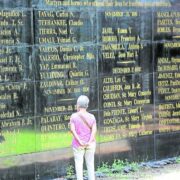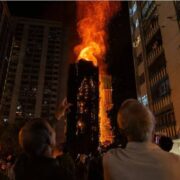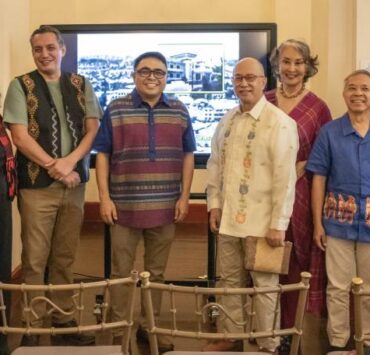Butterflies and metaphors in Joshua Barrera’s ‘Zephyr’
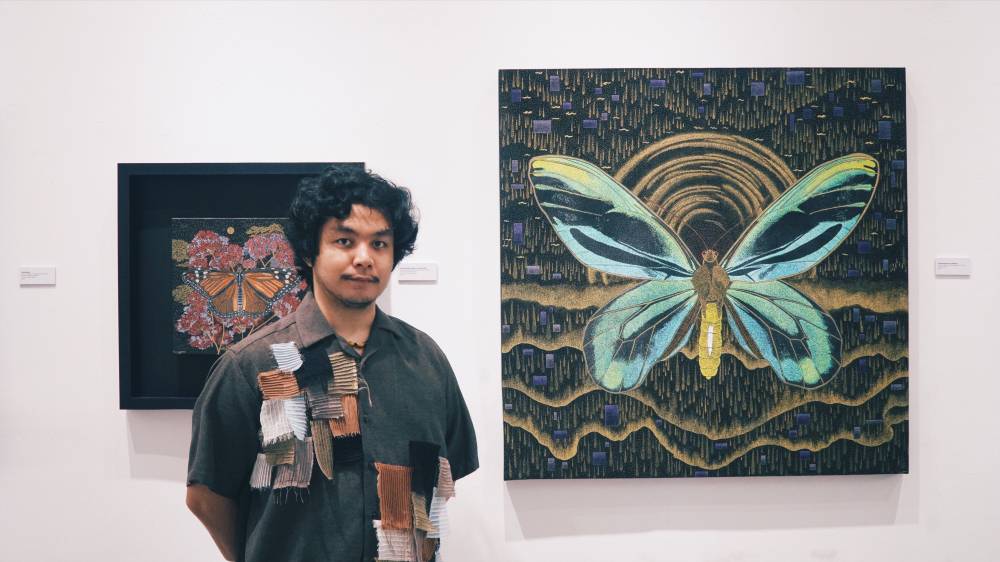
When Joshua Barrera was 10, he was captivated by high school students applying dots of color to paper, creating images of flowers and faces. Fascinated by the optical illusions and unique rendering of light, color, and shading in pointillism, he began experimenting and developed his own style. Encouraged by friends of his parents, he opted to learn independently, avoiding the constraints of formal art education.
Now 25, Barrera has successfully built a career around his pointillist art. Half of his 21 works were sold at his first solo exhibition at Altro Mondo Gallery. As an arts management graduate of De La Salle University-College of Saint Benilde, he possesses a keen understanding of the art market and prices his work accordingly.
Pointillism is a meticulous technique that requires active viewer participation. By blending tiny dots of color in the mind, the viewer expands the visual spectrum into a harmonious whole.
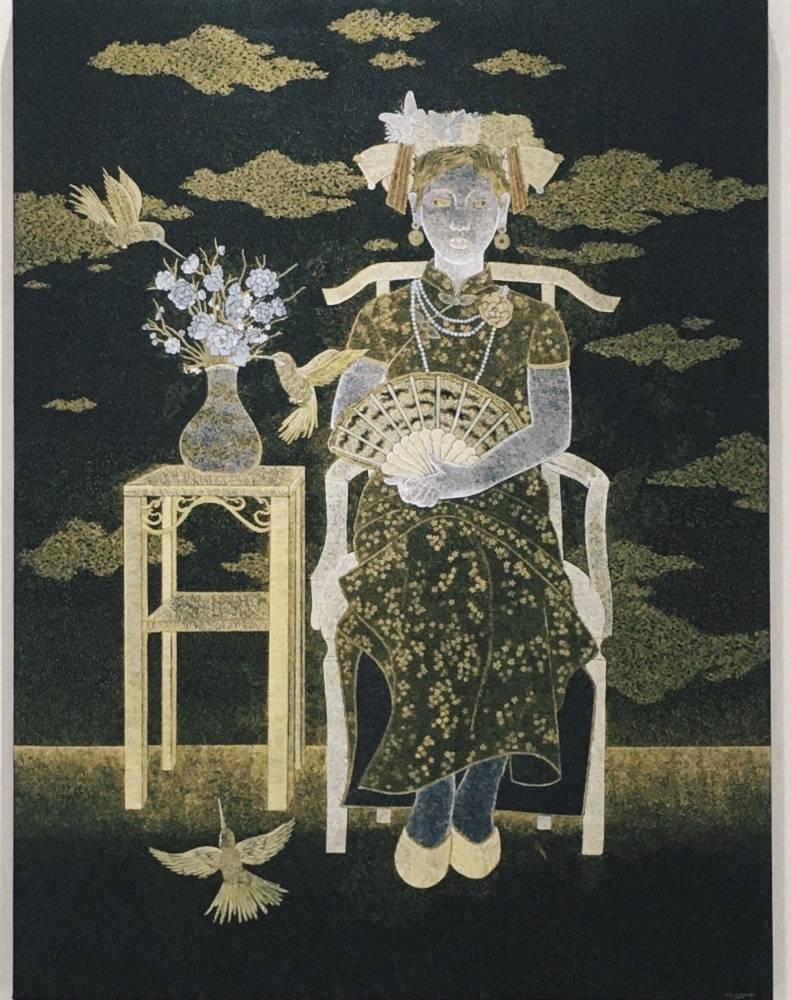
Nena Saguil, the country’s most renowned pointillist artist, intensified color and visual depth by painting closely spaced dots in contrasting colors. While Saguil’s dots are visibly distinct, Barrera’s technique focuses on creating an atmospheric effect. Using finely tipped pens, metallic inks, and pointy markers, he applies varying pressures and weights to the black canvas, producing an impressive tonal range of silver, amber, copper, gold, gossamer veils of color and mesmerizing rhythms of undulating lines.
His exhibit, titled “Zephyr,” evokes the gentle movement of a soft breeze. This concept is reflected in his themes of migratory butterflies, travel, drifting clouds, seafaring vessels along the waves, and the passing of his paternal grandmother.
Barrera’s fascination with the natural world is reflected in his butterfly series. He delved into the archives of the National Museum of Natural History, intrigued by the cultural significance of butterflies and moths as symbols of metamorphosis and their transient nature.
He observes, “You see a butterfly, but you can’t truly appreciate its intricate details. As soon as a human approaches, it quickly flies away.”
Barrera’s canvases capture the beauty of these winged creatures, emphasizing the delicate patterns on their wings through layers of tiny dots. These butterflies are set against soft, pixelated backgrounds. His statement piece, “Queen Alexandra’s Birdwing,” pays homage to the world’s largest butterfly while highlighting its endangered status.
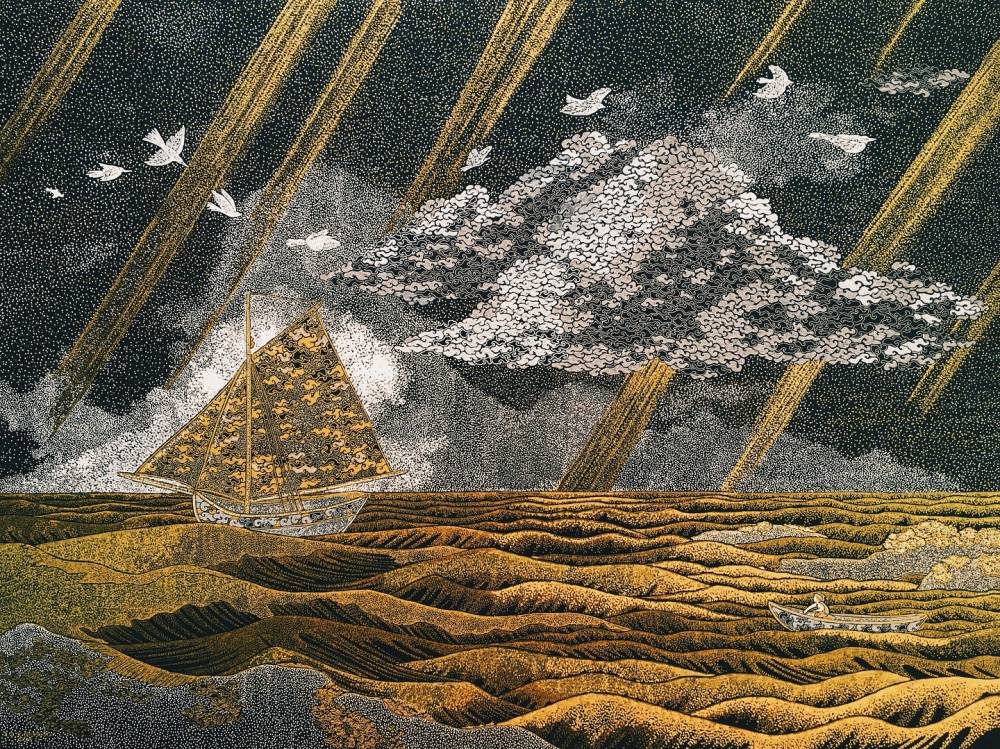
Enigmatic landscapes
His travel section showcases composite landscapes inspired by his trips to the Cordilleras and other Asian mountain regions. These intricate canvases feature delicately curved ridges and the illusion of moving breezes. Human figures are reduced, emphasizing the overwhelming scale of the natural world. Looming mountains, infinite horizons, and enigmatic waters symbolize the perpetual regeneration of the earth.
One canvas depicts a human figure hidden within mountain recesses and clouds, as if observing the world from a higher perspective. Barrera explains, “This suggests that hidden truths can be revealed.”
The artist views mountains as metaphors for challenges to be overcome. “Cloud Walker,” a self-portrait, shows Barrera’s obscured profile, wearing a salakot and a straw rain cape, gazing upon a majestic landscape. He interprets it as a symbol of perseverance: “You’re forging ahead, climbing the mountain, braving life’s difficulties, even when the wind blows you down.”
Another canvas portrays people in tribal attire amid the mountains, inspired by elderly tribesmen who shared their stories and crafts with younger generations. Barrera reflects, “The wind can carry these stories, but we don’t know if the people will preserve them.”
He draws attention to his representation of the Dogū statue, a mysterious figure that is half-human and half-animal. Barrera explains that folklore, like artifacts, can vanish over time. The flowing lines symbolizing wind and the element of uncertainty reflect this transience.
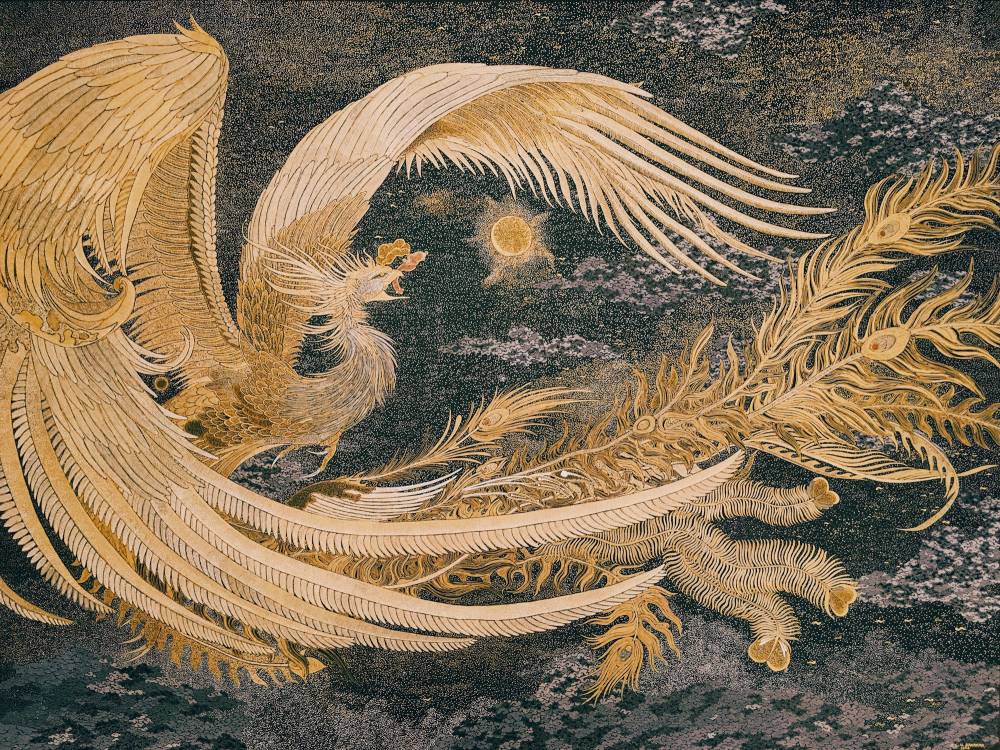
Most complex piece
It took Barrera two months, working 10 to 12 hours a day, to complete the most complex piece, “Minokawa.” This Bagobo version of the phoenix, said to be a heron that transforms into a monstrous moon-swallower, is depicted looking inward, its richly detailed plumes unfurling in all their glory. The work symbolizes the potential dangers of unchecked ambition.
The sailing series is Barrera’s interpretation of the seafaring cultures of the Philippines and Southeast Asia. The canvases feature galleons and boats traversing the waters, illuminated by sun rays.
The artist also draws inspiration from masters such as Swiss painter Arnold Böcklin’s “The Isle of the Dead.” This dark, foreboding island, hidden behind cypress trees and a stone seawall, is approached by a small boat carrying silent, shadowy figures. Barrera sees it as a personal reflection, a way to let go of grief in tribute to his patroness, his grandmother Nena Barrera.
Similarly, he has reinterpreted famous female portraits by Velázquez, Botticelli, and Goya, highlighting the fleeting nature of beauty, even when captured on canvas.
Women have been a strong influence in Barrera’s life. “Mnemosyne” honors his ancestors, blending the image of an Oriental woman holding a fan. Mnemosyne, the goddess of memory and mother of the Muses, serves as a tribute to the creative legacies of his grandmothers. The face resembles his great-grandmother, designer Marina Antonio; the fan symbolizes the elegance of his paternal grandmother Nena; and the graceful pose is inspired by Lulu Coching’s portrait of his maternal grandmother Malu Veloso.
Despite his youth, Barrera has already shown a mastery of restraining colors on a blackened surface, employing gel and ink to create figures, objects, and spaces with equal weight.
Exhibit runs until Nov. 29 at Altro Mondo Creative Space at 1159 Chino Roces Ave., Makati City.





